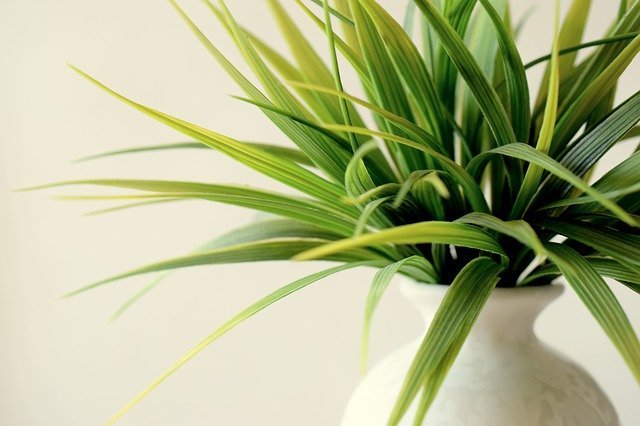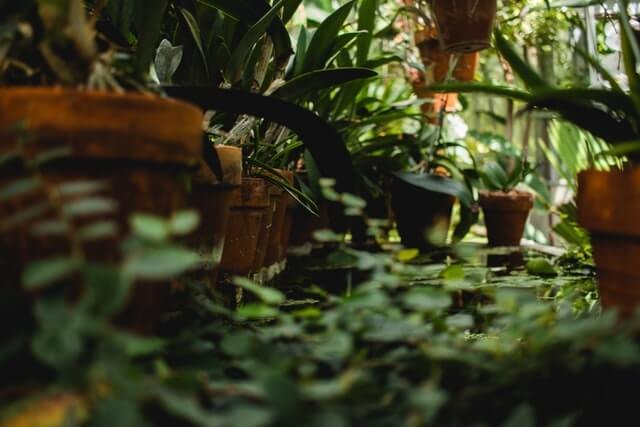Succulent plants are popular for two reasons: indestructible and beautiful. Technically, a succulent is any thick and flesh plant that has water storage organs. Succulent water stores water in their stems, roots, and plants. These plants have adapted to tolerate arid conditions across the world, from Africa to the North American deserts. Luckily for us, this adaptive mechanism has resulted in wide varieties of lead and plant shape formation, including tight rosettes, paddle leaves, and trailing or bushy columns of the teardrop leaves. No matter what type of succulent plant you are growing, the rules are much similar among the various species. Here are a few ways to grow succulent plants indoors.
You must have spotted these plants in different interior design magazines, or in elaborate weddings where they are used as centerpieces, or on Instagram. Succulent plants are becoming popular.
If you think that succulents are easy to grow, then it is a myth. Yes, it is easy, but it needs a little mental adjustment. To grow succulents, you need to have a dessert mindset.
What are Succulent Plants?
Succulents are plants with thick, green leaves and swollen stems that store a large amount of water. The term “succulent” is derived from the Latin word, “succus” which means sap or juice. Succulent plants can survive on fewer water resources, like mist and dew, making them well-tolerant of drought. There are several species and cultivators of succulents spanning different plant families, and most of the people associate succulent plants with Cactaceae, the cactus.
Succulents include a few of the most popular plants, like the agave and aloe, and several unknown plants. Cacti are an exclusive subset of the succulent group. Succulent plants make exceptional display plants in the dish gardens.
Ways to grow Succulent Plants Indoors
Choose the right succulents
Most of the people believe that all trailing succulent plants are suitable for indoor growing. Choosing succulents that do not prefer sunlight, but low light or shade will bring a huge difference in your indoor garden. Generally, succulents that are bright on color like purple, red, and oranges do not grow well when kept inside the house.

They need a good amount of direct sunlight. If you are new to this and want to know how to grow succulents in pots, then it is better to start with succulents that are green in color. Some of the examples of succulent plants include Gasteria and Haworthia.
Southern Light
Succulent generally prefer bright light, like the one we get on a south-facing wall or window. You must keep an eye on the leaves to find out if the level of light is right. Some species will start getting blackened if they are exposed to sun rays suddenly; the leaves start turning white or brown as the plant bleaches out and soft tissues are destructed.
On the contrary, an underlit succulent plant will start to stretch, with a long stem and broadly placed leaves. This condition is called etiolation. The solution is to offer better light and trim the plant back to its real shape. Many types of succulents will survive outdoors during the summer.
Right temperature
One of the wats to grow succulent plants indoors is to maintain the right temperature. Succulent plants are much colder tolerant than people believe. In the desert, where most of the time there is a clear contrast between day and night, succulents survive during the cold nights, down to 40 degrees. Preferably, succulents prefer the daytime temperatures between 70 degrees and nearly 85 degrees and night temperatures between 50 and 55 degrees.
Watering Succulent
A succulent plant must be watered generously during the summer days. Dry the potting mixture. During winter, when the plants go dormant, reduce the watering to once in a month. Overwatering and ensuing plant rot are the most common problems that lead to a plant failure.
Though, be cautious, that an overwatered succulent plant might initially look healthy. However, the cause of death may have already set in the underground, with the decay starting to spread upside from the root.
Never allow a succulent plant to sit inside the water. Overwatered plants generally get discolored and become soft. The leave may turn white or yellow and ultimately lose their original color. A plant with this condition is hard to repair, but you can remove it from the pot and plant the roots.
If you find them rotten and brown, cut the dead roots and repot into a drier potting area, or take a cutting and spread the parent plant. An under-watered plant will at first stop growing, then start to shed leaves. Instead, brown spots may start developing on the leaves.
Choose a perfect pot with plenty of drainage holes
You must have seen that in nurseries succulents are grown in soil that is rich and retains too much water, so you must report your succulent as soon as you bring it. Begin with a coarse potting mix with good aeration and drainage. You will find special cactus and succulent mixes, or you can even use an African violet mix. To further enhance drainage and avoid compaction, you must add pumice or perlite to the African violet mix or cactus. Make sure you wet the mix before planting so that it gets evenly moisturized.
Succulent plants do not need too much sunlight
Many first-time succulent plant growers think that the spot in the garden which receives maximum sunlight is the best for their succulents, but all succulents do not need sunlight throughout the day. The favorites are variable among the thousands of varieties of succulent plants. Some prefer shade, filtered light, sunlight whereas some prefer blasting sun. Generally, most of the succulent plants prefer at least 2 to 3 hours of sun or filtered sunlight a day.
While growing succulent plants indoors, keep them by a window or inside a garden room where there is full sunlight for at least two to three hours a day. If you do not have a sunny window, you can overwinter succulent plants under grow lights. When they start enjoying outdoor conditions again, gradually bring the plants outside to allow them to adjust for avoiding sunburn.

Give as much light as possible
When you keep succulent plants indoors, it becomes difficult for them to get enough sunlight. Generally, when outdoors, the plant needs at least 6 hours of bright and indirect sunlight every day. However, if you have kept succulent plants indoor then, you must keep it near a window that gets lights the whole day. If it is not possible, then keep your succulents near the brightest window or the brightest area of your office or home.
Water the plant, but less frequently
The biggest issue people face while growing bunny succulent plants is watering them. It is a big deal if you have kept the plant inside your house. Succulent plants need a good amount of water to survive. However, they do not want to be frequently watered like other indoor plants. Succulents prefer their roots to be soaked in water but then get it dried quickly.
After a few days when the soil becomes too dry, you must water it again. Spraying little water can help them survive for a long period, but if you want them to survive, you must follow the “soak and dry” method.
By following the above-mentioned ways to grow succulent plants indoors, you can grow varieties of plants without much problem.

